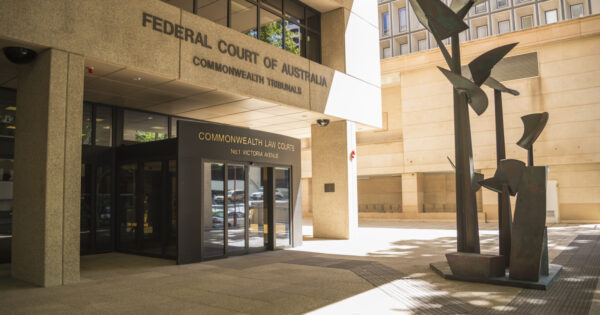RBA meets consensus with rate cut in first decision of 2025

In its first monetary policy decision for the new year, the Reserve Bank of Australia (RBA) has satisfied market consensus with an official cash rate cut of 0.25 basis points to 4.1 per cent, taking it to its lowest point in 16 months.
In its statement delivered today, the RBA Board said that recent data pointed to inflationary pressures reducing “a little more quickly than expected”.
“Inflation has fallen substantially since the peak in 2022, as higher interest rates have been working to bring aggregate demand and supply closer towards balance,” the statement said.
“In the December quarter underlying inflation was 3.2 per cent, which suggests inflationary pressures are easing a little more quickly than expected. There has also been continued subdued growth in private demand and wage pressures have eased. These factors give the Board more confidence that inflation is moving sustainably towards the midpoint of the 2–3 per cent target range.”
However, the central bank did also indicate that some economic uncertainties remained and that when it comes to further policy easing, it would remain cautious.
“Some recent labour market data have been unexpectedly strong, suggesting that the labour market may be somewhat tighter than previously thought. The central forecast for underlying inflation, which is based on the cash rate path implied by financial markets, has been revised up a little over 2026.
“So, while today’s policy decision recognises the welcome progress on inflation, the Board remains cautious on prospects for further policy easing.”
The Board highlighted its concerns across household spending, the delayed effects of monetary policy decisions and ongoing geopolitical tensions as reasons for its potentially only rate cut in the first half of the year.
“Growth in output has been weak, private domestic demand is recovering a little more slowly than earlier expected, and there is uncertainty around the extent to which the recovery in household spending in late 2024 will persist. Wage pressures have eased a little more than expected, housing cost inflation is abating, and businesses in some sectors continue to report that it has been hard to pass on cost increases to final prices.
“There are notable uncertainties about the outlook for domestic economic activity and inflation. The central projection is for growth in household consumption to increase as income growth rises. But there is a risk that any pick-up in consumption is slower than expected, resulting in continued subdued output growth and a sharper deterioration in the labour market than currently projected. Alternatively, labour market outcomes may prove stronger than expected, given the signal from a range of leading indicators.
“More broadly, there are uncertainties regarding the lags in the effect of monetary policy and how firms’ pricing decisions and wages will respond to the slow growth in the economy and weak productivity outcomes while conditions in the labour market remain tight.
“Uncertainty about the outlook abroad also remains significant. Geopolitical and policy uncertainties are pronounced and may themselves bear down on activity in many countries if households and firms delay expenditures pending greater clarity on the outlook. Most central banks have been easing monetary policy as they become more confident that inflation is moving sustainably back towards their respective targets. But market expectations for further easing have moderated somewhat in recent months, particularly in the United States.”
The Board also emphasised that its policy would likely remain “restrictive” even given this rate cut, out of concerns over disinflation risks.
“Sustainably returning inflation to target within a reasonable timeframe remains the Board’s highest priority. This is consistent with the RBA’s mandate for price stability and full employment. To date, longer term inflation expectations have been consistent with the inflation target and it is important that this remains the case,” the statement said.
“The Board’s assessment is that monetary policy has been restrictive and will remain so after this reduction in the cash rate. Some of the upside risks to inflation appear to have eased and there are signs that disinflation might be occurring a little more quickly than earlier expected. There are nevertheless risks on both sides.
“The forecasts published today suggest that, if monetary policy is eased too much too soon, disinflation could stall, and inflation would settle above the midpoint of the target range. In removing a little of the policy restrictiveness in its decision today, the Board acknowledges that progress has been made but is cautious about the outlook.”
Market commentary echoed the assessment made by the RBA Board when looking ahead to the rest of the year’s monetary policy decisions.
“Today’s interest rate cut reflects the Reserve Bank’s view that progress is being made on the inflation front despite Australia’s still-tight labour market and the fact economic growth is likely to remain resilient,” Dr Grant Feng, Vanguard Senior Economist, said.
“However, while the lower-than-expected core inflation print has given the RBA the incentive to cut the cash rate today, we believe the disinflation process in Australia will remain slow.
“Therefore, we believe that the RBA is likely to adopt a cautious stance towards further rate cuts and that the pace of easing will be gradual throughout the year.”











Albo finally got off his a$$ and put pressure on someone…must be an election announcement coming soon.